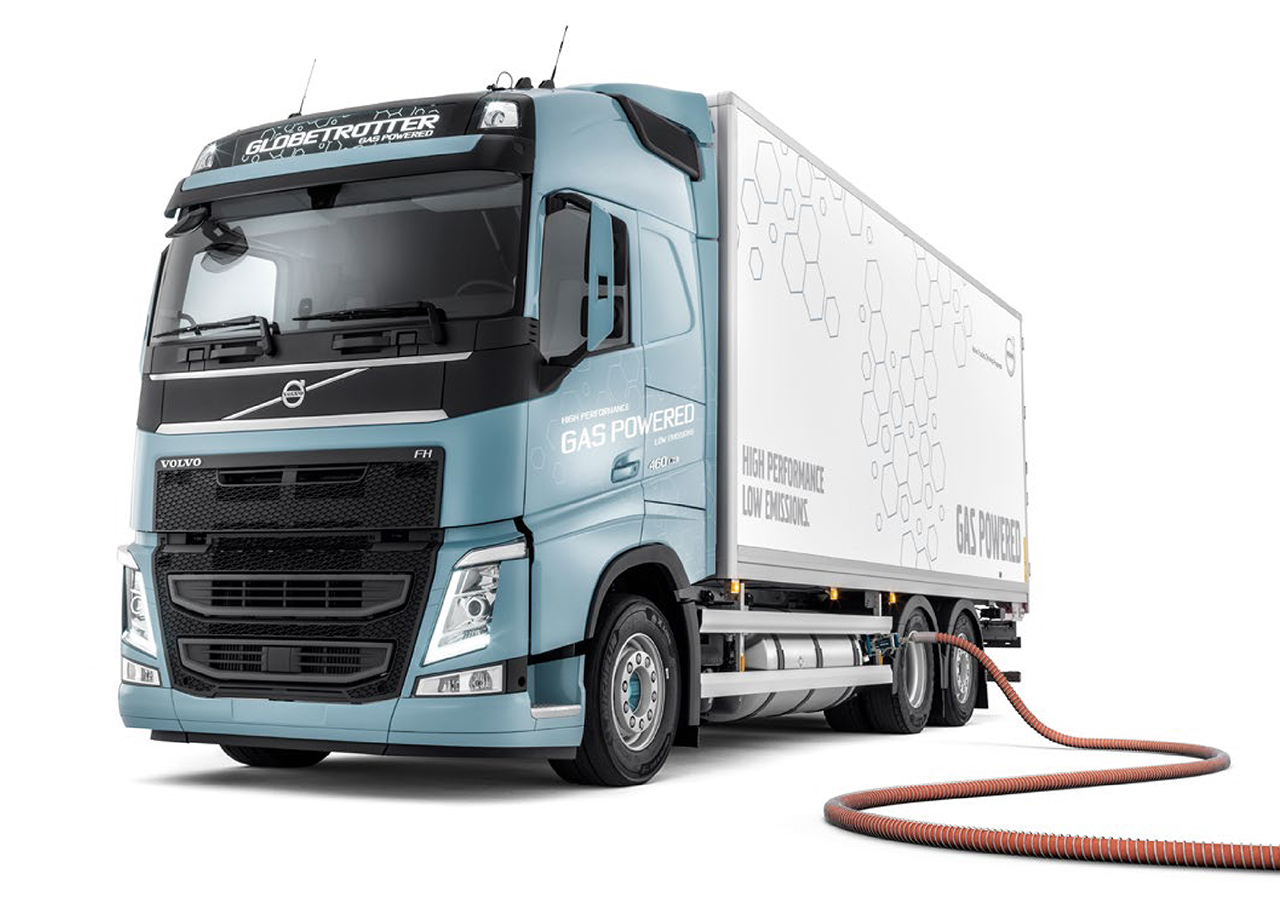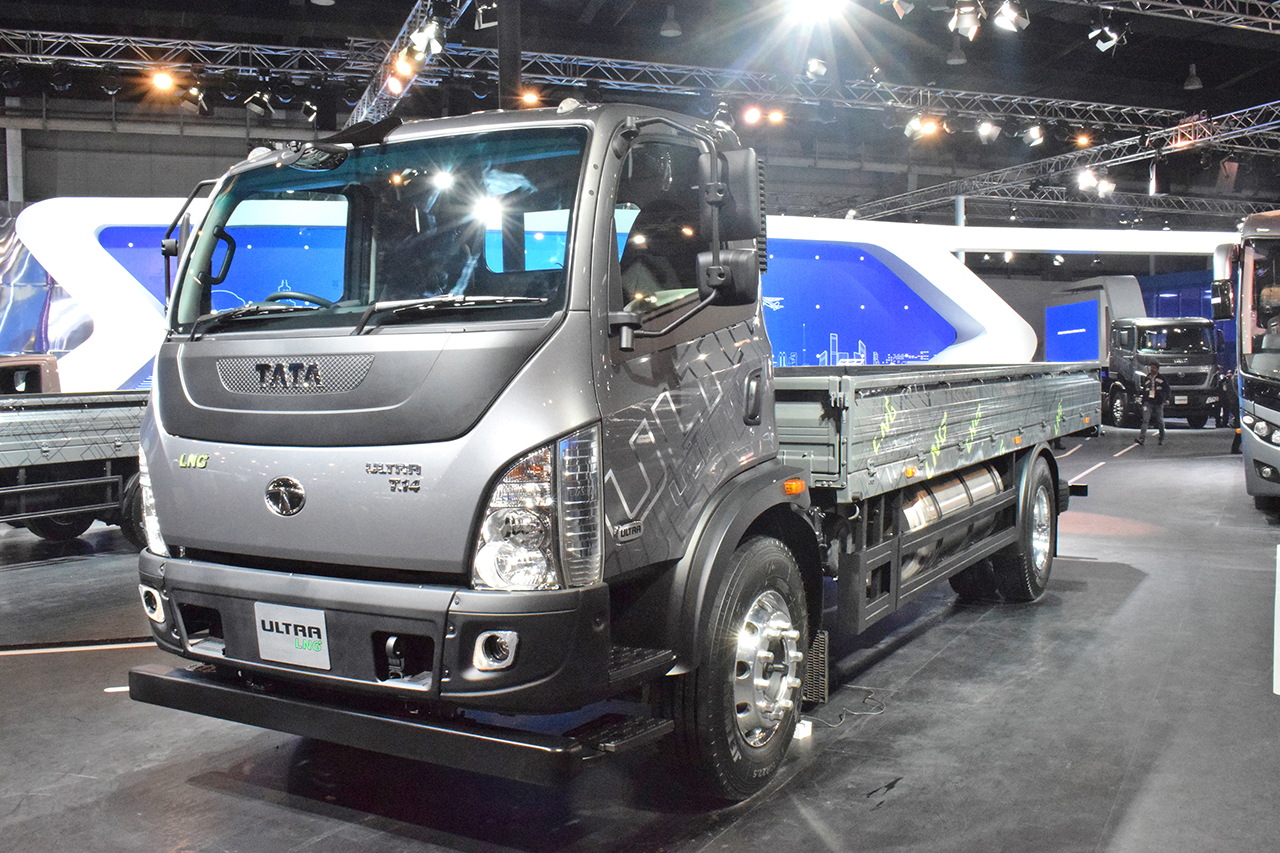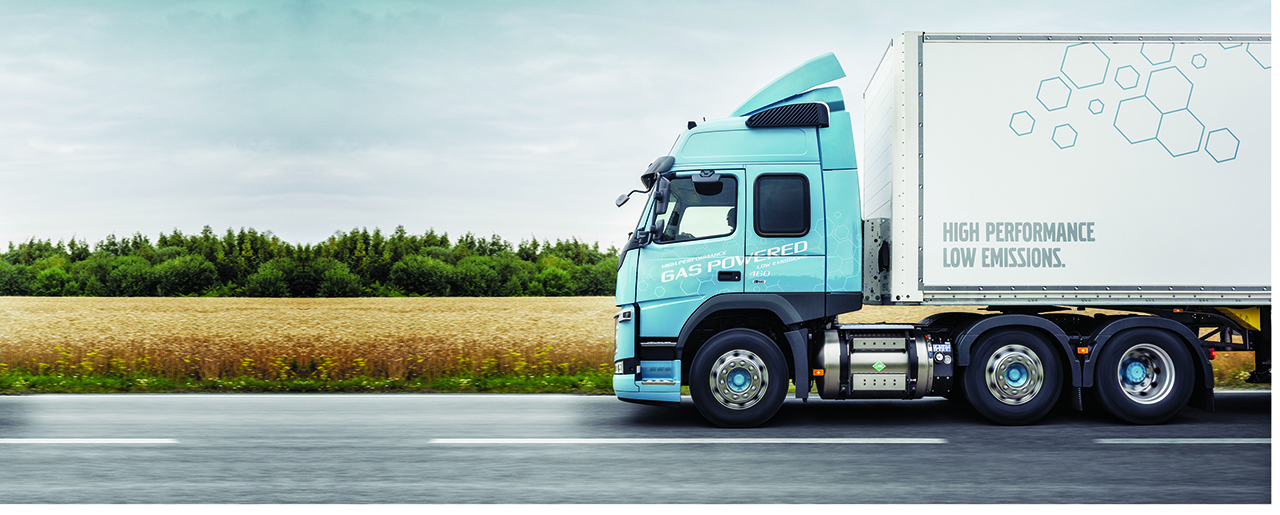The world is facing serious energy-related challenges that are complicated by concerns about global climate change. Energy is a key driver of economic growth but the development, transport, and use of petroleum fuels has contributed to an increase in GHG (greenhouse gas) emissions. This article by Rudolf Huber, President, Institute for Methane Fuels, looks at how the LNG (liquefied natural gas) industry can enhance environmental sustainability and contribute to a viable energy future in the context of climate change

LNG fuelling was marginal just a few years ago and LNG is still a fringe fuel — at least for the moment. Now there are projects happening everywhere and it is rapidly becoming mainstream. The old fuelling world is staging a fierce defence battle and will not shy away from discouraging companies to make the switch. But “there’s one thing stronger than all the armies in the world, and that is an idea whose time as come”, as Victor Hugo famously wrote. Corporates who have tried LNG to fuel a truck, bus, or other heavy vehicle are probably wondering why they did not start to convert their fleets to LNG earlier and why the world has not yet adopted this fuel.
The question lingers as there is no explanation that would meet the need for common sense. Even seasoned logistics and energy professionals are bewildered when LNG is mentioned. Most of them know that such a thing exists. Sometimes, they are also aware that it is a good alternative to diesel. But to the vast majority, it’s a mystery with strange properties. A watery liquid that is colder than anything found in nature. It occurs naturally on the moons of outer planets such as Titan, ten times further from the Sun than our Earth.
As many people are Hollywood-educated, they assume that such a cold liquid would freeze a human body solid in mere seconds. LNG is surely the stuff of science fiction. This combination of bewilderment and awe, coupled with political pork (funding for government programs the economic or service benefits of which are concentrated in a particular sector but whose costs are borne by all taxpayers) has kept LNG on the fringes. But some corporates have been using LNG as a fuel for over half a century and have never looked back.
But if we cast a glance backwards, we see that the early adopters of LNG followed business sense and did it for financial reasons. Over the past two decades or so, natural gas was a good deal cheaper than oil. Saving money is a good motivator for trying something new. Yet the truth is more noble because environmental protection and clean air are not just fads that were invented a decade ago. As far back as the 1970s, large cities were afflicted with smog to the point that breathing became a problem. People suffered from respiratory ailments because of the bad air, composed of particles, nitrogen oxides and sulphur oxides from internal combustion engines. All these things should not be in the air we breathe. The younger generation is not aware of this as many developed global cities have enacted clean air rules.
Those rules and exhaust gas treatment systems have worked wonders. The Dallas Authority for Regional Transit opted for LNG as a fuel for their commuter vehicles over 25 years ago. It did so for its clean properties, and not for the financial savings. Crude oil at the time was a lot cheaper than it is today. Besides, the natural gas markets in the USA had been recently deregulated, which destroyed the oil link in gas procurement. The same is true for Philadelphia’s refuse haulers, also about 25 years ago. They began using refined and liquefied biomethane from their trash dumps to fuel their trucks. Today the Chinese are using LNG to fuel their heavy vehicles and thereby clear polluted skies. India is currently acting to gasify its transport system. Cities around the world are seeking better environmental protection and breathable air.

With some off-the-shelf technology, LNG is a much cleaner option than green fuel alternatives. This includes hydrogen (all colours) and electric vehicles, even when the electricity has been produced with wind and solar energy. Let us examine each of the different substances in exhaust gas.
Particulate Matter
Fine particles (including nano particles) occur when liquid fuels are vaporised and then incinerated. Fuel vaporisation is never perfect. It entails some form of spraying of the fuel into the combustion chamber. The fuel does not become a gas but a form of mist (small droplets) in the combustion chamber. Each droplet combusts at the surface and hence produces dust kernels. Those are known to us as cancer-causing particulate matter. Methane, however, enters the combustion chamber as a gas right away. There are no droplets, hence no surfaces, hence no kernels – just a clean flash of energy. The combustion of methane from LNG does not cause any particulate matter to form, hence no filtration is required.
Sulphur Oxides (SOx)
Sulphur is a solid compound that is commonly found in all kinds of hydrocarbon mixtures. As a solid, the low temperatures in LNG make it freeze. Remember it is a cryogenic liquid at –161°C. This frozen sulphur would clog expensive cryogenic equipment. Hence, all liquefaction plants are equipped with facilities to purify the feed gas. They do this to the point where sulphur and other solids are not present anymore. Nobody wants to risk damaging expensive equipment. As there is no more sulphur in the LNG, no sulphur oxides can be created.
Nitrogen Oxides
Methane as a fuel reduces NOx levels already by 85% as compared to diesel and a simple catalytic converter brings this down to close to zero. NOx is relatively straightforward to extract and can be transformed into water through a simple and affordable process. This takes care of the three types of emission that directly impact health.
Carbon Oxides
Now let us turn to carbon oxides. The combustion of methane still produces those carbon molecules, albeit to a lesser extent than with diesel or other hydrocarbons.
Understanding the LNG Option
If this is still a cause for concern, there is a simple and straightforward way to completely eliminate all carbon emissions with LNG. When you liquefy LNG, just use biomethane instead of extracted methane as the prime ingredient. It is carbon neutral and sometimes even carbon negative and remains this way as LNG. One may conclude that LNG is an emissions-free fuel that does not require complex, expensive or untested technologies. Companies that do not yet have access to bio-LNG – a highly sustainable version of LNG – can still start transforming their fleets, since vehicles that run on conventional LNG will also run on bio-LNG as soon as it becomes available. This eliminates LNG procurement risk.

The above are not the sole advantages of LNG. The technology used in a methane engine is much simpler than for a diesel engine. This is not only because the after-treatment of the exhaust gas (a method for reducing harmful emissions to ensure the engines meet emission regulations) is no longer needed. There is no need to spray fuel into the combustion chamber, which means fewer moving parts and therefore lower maintenance bills.
To cite an observed case, a producer of methane electricity generators operated two identical generators side by side, one running on diesel and one on methane. After 1,000 hours of straight operation, both brand new generators were disassembled to examine the parts. The diesel engine parts were black and sooty and required extensive maintenance to get back into operational shape. The methane generator, on the other hand, was almost spotless, with just a couple of orange and yellowish stains on the inside of the cylinder betraying the generator as having been used operationally. It was not difficult to conclude which maintenance bill would be higher. Add to this that the fact that all parts of the LNG value chain have been in operation for more than half a century. Every single piece in the chain is technologically mature.
Let us look at another major problem taking electric vehicles as an example. Longer distances require massive and extremely heavy batteries. These are expensive and reduce payload capabilities significantly. In some cases, such as marine vessels and non-electrified railways, they are almost impossible. LNG vehicles on the other hand are free of such problems. Standard LNG-fuelled trucks with an extended tank have hauled cargo for 1,500 km with a single filling. Marine vessels do global runs while not changing their bunkering patterns. In addition to its cost and technical superiority, LNG is also a safe fuel option, despite a widespread belief that it is highly explosive and dangerous. Energy scaremongers are not known for sticking to reality and this is true with respect to LNG.
LNG as such is not explosive. Methane would have to vaporise first to burn, and even then, it does not explode but rather burns off. There are only two circumstances where an explosion can be caused by LNG. The first is if the resulting gas gets mixed with air and is confined in a closed space when ignited. The other is a rapid vaporisation event where the liquid quickly turns into vapour and expands 600-fold. Both are situations that have been safely handled for more than fifty years now.
It is a fact that LNG has the best safety record for any energy carrier. There have been more coal dust explosions and electric vehicles that burst into flames than incidents with LNG. The outstanding safety record of LNG is the pride of the industry. In addition, it is non-toxic and non-corrosive: equipment that routinely comes into contact with LNG remains unchanged. Finally, natural gas vehicles do not have the underground parking problem LPG (liquefied petroleum gas) vehicles have. Natural gas is lighter than air and hence does not accumulate in underground garages.

Although LNG is a mature technology, its application as a vehicle fuel has been marginal thus far. This means that LNG vehicles are still assembled in limited runs. This makes them more expensive than their diesel counterparts, even with simpler and hence cheaper technology. But as the market grows substantially, more vehicle builders are offering LNG as an option and production runs are getting larger, which brings prices down further. There is still a lot to tweak in gas vehicles and the value chain, which means that costs will continue to decrease, so we are looking at a fuel option that will compete with diesel on price without the need for subsidies.
Engine makers are going for methane-only engine models now. The market has become big enough to pay for the technical developments. A few years ago, Cummins introduced the first methane-only engines. Heretofore, methane engines were really diesel engines that had been converted to run on methane. The newer models are methane-specific, thus enhancing performance and efficiency.
The tangible benefits of LNG are complemented by intangible advantages. Using a sustainable and environmentally friendly fuel to conduct business has a positive effect on the bottomline, as customers are beginning to shun products and services ignoring those trends. Retail chains such as Sainsbury in the UK and Wal-Mart in the USA boast about running on clean methane instead of diesel. Parcel services such as UPS pride themselves as green enterprises. Bio-LNG makes a company carbon neutral and is at least as good as using electric vehicles or hydrogen, both of which moreover have a range of unanswered issues in their respective value chains.
LNG does not have those hidden liabilities. As well as being an optimal fuel for terrestrial transport, LNG is ideal for the future of space travel. Most rockets thus far drag a black tail of fumes behind them, produced by burning kerosene. Elon Musk’s SpaceX Starship and Blue Origin’s New Glenn run on methane, which is another name for LNG. The lack of a tail of fumes demonstrates how clean it is.
—
What is LNG and why is it an Optimal Fuel?
LNG is methane, also known as natural gas or biogas. It is by far the cleanest burning hydrocarbon by any conceivable standard. But critics retort that it is nevertheless a hydrocarbon fuel and even if it pollutes less, argue for cleaner alternatives. However, these misgivings are incorrect. If we take a close look at emissions from combustion of hydrocarbon fuels, we find four things:
1. Particulate Matter (PM): Very small, solid particles that stay airborne for a certain period of time. They are also called aerosols for their lingering properties. Those particles are laden with all sorts of heavy metals and chemicals that no living thing should be exposed to.
2. Nitrogen Oxides (NOx): Nitrogen that has formed a chemical bond with oxygen. Nitrogen dioxide is a toxic substance, responsible for the yellowish-orange haze on smoggy days.
3. Sulphur Oxides (SOx): Oxidised forms of sulphur that is responsible for acid rain.
4. Carbon Oxides (CO and CO2): Colourless, odourless gases that form the basis of photosynthesis. CO2 is accused by some as being the cause of atmospheric warming. Otherwise, it is harmless to life at concentrations far above what we find in the air today.
—
Conclusion
LNG is the cleanest petroleum fuel around and in the context of the energy transition policies being deployed by the European Commission and governments worldwide, it represents a key alternative to reduce greenhouse gas emissions and combat global warming. Rolling out LNG for terrestrial and maritime transport will play a major role in protecting the environment as a complement to renewable energies. But the potential uses of LNG are not limited to terrestrial and maritime transport, since it can also be used to power manufacturing plant and communities not linked to the natural gas transmission grid.